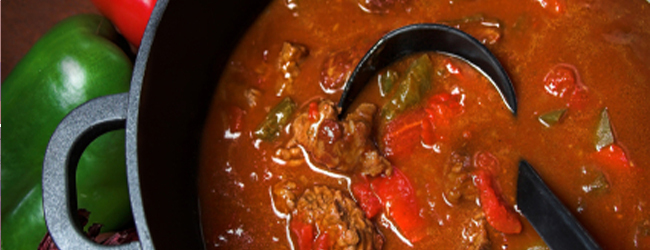Originally during the age of the Great Migration (897 AD), the Magyar (Hungarian) tribes lived the life of nomads. Most of these tribes originated in Asia. Influences from Asian and of many other countries can be found in the Hungarian cuisine. For instance Italian during the Middle Ages, due to the Italian wife of King Matthias, the Turkish cuisine during their occupation of 150 years since 1526.And the French cuisine at the Royal Court of Vienna during the Austrian-Hungarian monarchy in the 17th -18th centuries. The Hungarian cuisine lost much of its original heaviness due to these historical events, but kept its characteristic taste which was enhanced by the use of “paprika” (pepper). Interestingly enough this ingredient was introduced in the Hungarian kitchen only in the 19th century. Today “paprika” is the Hungarian national spice which comes in many varieties. Fresh green and yellow peppers, which turn red later in season, are mostly consumed raw or in salads. The “paprika” comes from red ripe bell peppers that are dried and pulverized such as “special” (különleges), “delicate” (csemege) or “sweet” (édes).
The most commonly Hungarian dish outside Hungary prepared with “paprika” is gulyás. Hungarian goulash is neither a soup nor a stew, it’s somewhere in between. In Hungary it’s considered rather to be a soup than a stew, so look for it among Soups on restaurant menus.The Hungarian soil, climate, and geography can supply almost all the variety of food and drink one can imagine apart from seafood.
The Hungarian cuisine therefore offers a large variety in different regions and dishes .
Jó ét vágyot! (Enjoy your meal!






